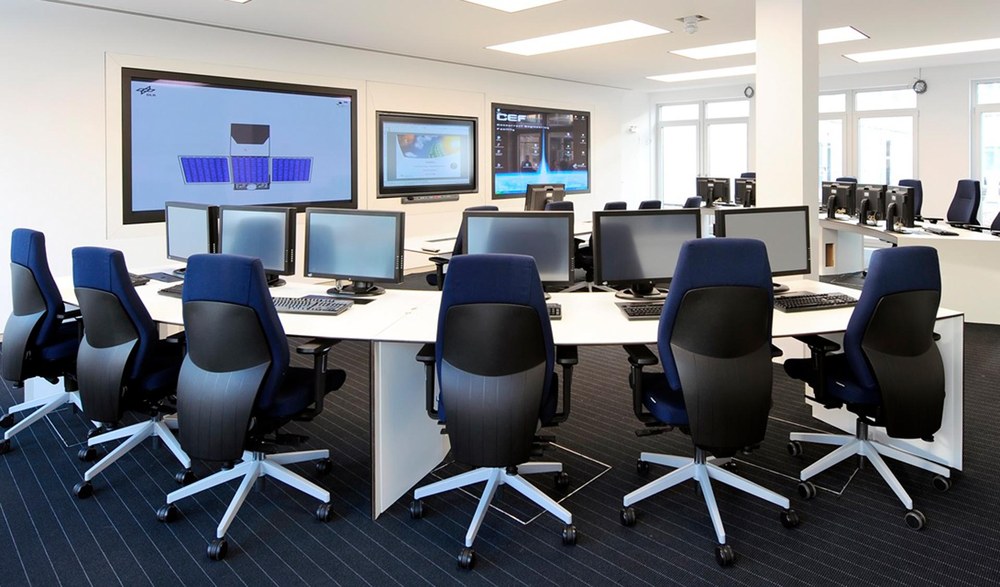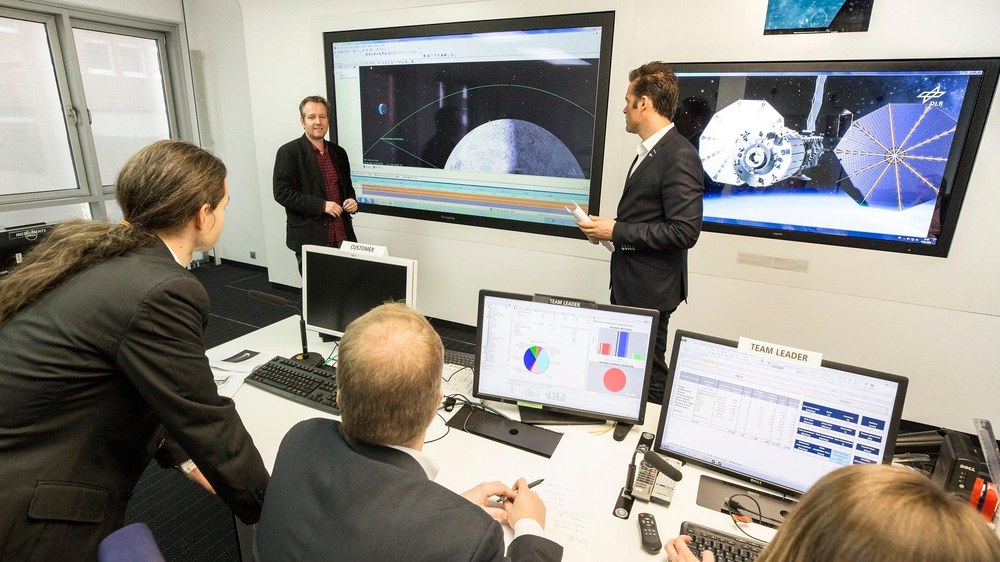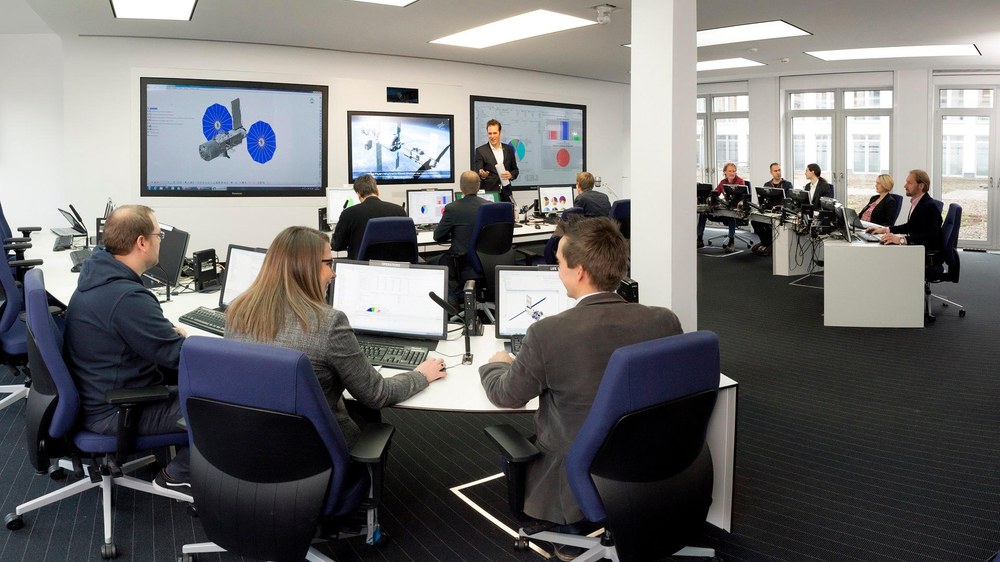Concurrent Engineering Facility (CEF)



The Concurrent Engineering Facility (CEF) in Bremen is the design laboratory for the System Analysis Space Segment department at the German Aerospace Center (Deutsches Zentrum für Luft- und Raumfahrt; DLR) Institute of Space Systems, where feasibility studies and the early design phases of future space missions are carried out with the aid of concurrent engineering (CE). CE is a design process that extends or replaces traditional engineering processes through the joint, parallel work of a multi-disciplinary team at the same site, thus optimising individual design cycles. The aim is to make each respective project as efficient and consistent as possible from the very outset.
Design laboratory for simultaneous data access and direct communication
The large-scale Concurrent Engineering Facility (CEF) provides the necessary setting and tools for the CE process. The design team is guided by experienced study leaders from the CEF team.
During this process, the CEF enables simultaneous data access across all disciplines, as well as communication between participants using a range of mediums. This includes both face-to-face and digital modes, supported by appropriate hardware and software elements and communication tools. The laboratory is divided into three working areas and has over 21 PC workspaces and various multimedia functionalities. Guided sessions for one study are carried out in the main room, while the other two rooms are used for group discussions during the non-moderated phases, or are available for use by extra working groups or observers.
Over 65 studies are currently being carried out at the CEF. Although the focus is on designing satellites, exploration modules and space transport systems, it has also been used to develop life support systems for human spaceflight, infrastructure for Earth and other celestial bodies, and non-space systems. As well as supporting internal DLR activities, the CEF also provides a venue for studies conducted with partners or completely external parties. Current partners and customers come from various international institutions, including universities, research institutes, space agencies and industry.
